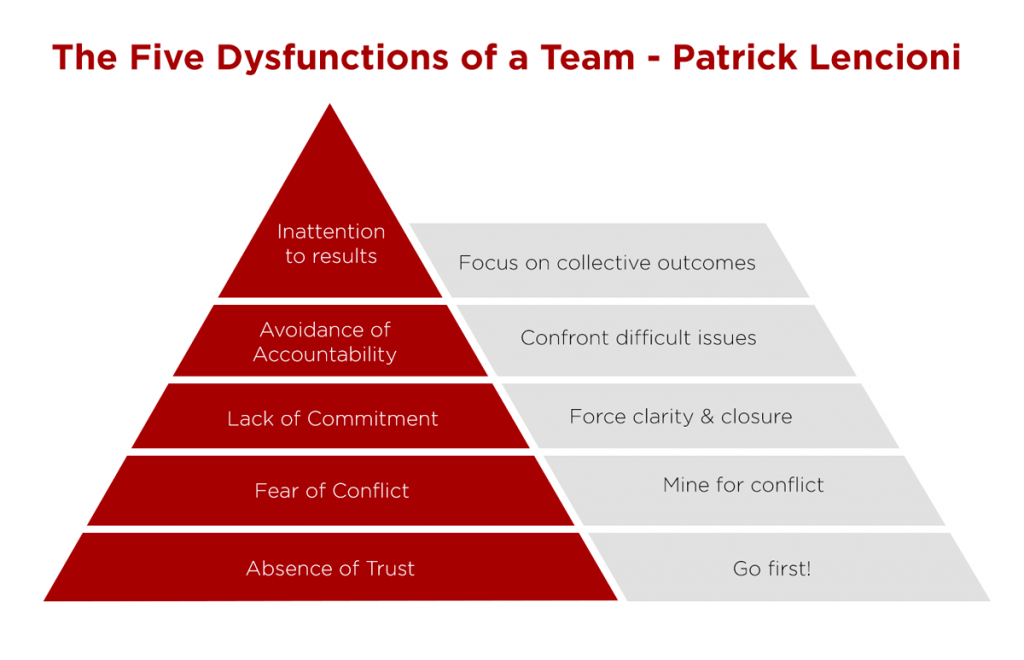Leading with Empathy and Love
My First Encounter with Leadership
My history with leadership started 25 years ago, when I was 19 and got my first job.
I was working at an Internet provider and helping desperate customers to connect to the Internet. Yes, this was still the age of the 33.6k modem!
Quickly, I realised that my tech skills were not as useful as my empathy and care for my customers. In the second year I got promoted to be the manager of the team. Why? I was able to handle the most difficult customers and helped my colleague with their most difficult customers. What’s a difficult customer? Someone in an emotional turmoil. Angry, sad, and sometimes desperate. I was taking care of them with empathy, care and love, treating them as human beings, not just customers.
Developing My Leadership Skills as the CTO and Co-Founder at Seesmic
When I was 30, I got pushed into a new leadership role: a start-up co-founder and CTO.
I built and led a team of 50+ engineers. I built this distributed team mostly on gut feeling and trust. Pushed by the pressure to hire fast, I took a couple experiments – where I was more enamoured with the resumé of an engineer rather than with his personality. I regretted it almost immediately. Eventually, I (re)discovered my “people skills”, the importance of caring for people’s emotions, and how growing as a CTO means becoming a coach to your team.
Reflecting on My 25 Years of Leadership
A lot of my initial leadership was based on my instincts and gut feeling. It’s only until a few years ago did I really start to analyse my own style, asking people how they would define it. What I heard was: “Johann, you care about people, you lead them with love”.
Love is a strong word, so let’s take a minute to clarify what it means in a business context, or at least how I would personally define it in a leadership context. To me it is the simple act of caring about the human being behind the work and trying to understand not only their rational reasons, but also their emotions.

That led me to research why teams actually fail – which has been quite helpful during my investment days at Techstars.
One of the best resources I found on this topic is “The Five Dysfunction of a Team” from Patrick Lencioni.
It’s a simple pyramid.
Each layer builds on the one below. The two base layers are the one that interest us. Absence of Trust and Fear of Conflicts.
Trust and Fear of conflict are deeply intertwined with empathy and love.
Leading with Love: The relationship between love and trust
In the expression “falling in love’, there is, as Alan Watts,a British philosopher, once said, “…the idea of the fall, of the surrender. Letting go of control -all sensible people want to keep things under control.”. Therefore, this loss of ego, through being fully yourself in all your vulnerability is an act of love.
To create trust, you indeed need authenticity and vulnerability which in turns mean letting go of control to a certain degree. At the other end of the spectrum, we know those who cannot let go of control: the micro-managers.
There’s a reason they are called micro-managers. Not only because of the micro, but they are just managers. Not leaders.
Bill Campbell once said: “Your position makes you a manager, your people make you a leader”. You don’t get to decide if you’re a leader. You are elevated to this position by your people.
As a startup founder you are often tempted to wear a mask. Entrepreneurship is hard, and in Silicon Valley it is expected to appear like you are “crushing it” everyday.
Nobody is crushing it everyday.
We all have lows, doubts and fears. While some may see a sign of weakness in sharing those moments, I see it as a sign of bravery and courage. Boys as they grow are told to “toughen it up!” and hide their feelings, which at best is toxic to our society. It could also be the reason for rampant mental health issues occurring in our society right now.
Leading with Love: The Relationship Between Love and Fear of Conflict
What about fear of conflict? Fear of conflict is an enabler for failure as it divides people by burying emotions. It creates what’s called “Fake Harmony”. The problem with burying emotions is that they somehow always resurface as resentment – at which point things will start to implode. Kim Scott wrote a book on this subject, called Radical Candor. What she suggests as a better way of personal interaction is “challenging directly and caring personally”.
My investment manager at Techstars told me once something like “You can say the most terrible things, but if you say them with love you turn them into positive feedback that people will appreciate for its authenticity”. It means saying what you have to say, but caring about the emotions of the other party.
Now, if you don’t have a natural empathy, is it possible to fake it? Indeed, it is. In fact some of the best techniques to “fake it” are negotiation techniques. irroring and labelling are great ways to build a rapport, build trust and get what you want.
The most useful tool in your arsenal to deal with difficult conversations might well be how you care about the other party’s feelings. Here I’m not talking about the “Shit Sandwich” as it’s often called – saying something positive, then something negative and ending up with something positive. People are not dupe, and all you’re doing with this is creating confusion. What I’m talking about is truly to address the emotional aspects of what the other party is experiencing.
Building and Leading Communities with Love
If we look at a team that is led with empathy, and the team trusts its leader, they are more likely to interact between themselves that way as well. The hierarchy almost dissolves, and people start bringing their whole selves to work because they feel they don’t have to hide behind an image. They interact on a much deeper human level. It’s almost as if they turn into a community rather than a team. Wait but what’s a community again? A group of people gathering around common values, vision and around a leader.
It took me years to realise that my longtime obsession for building communities was just an extension of my leadership style. Love is at the core of community building. Love for people. The love of seeing them share what they enjoy. The love of seeing new connections being created, and lives being changed. When I started my company, Seesmic – we were building an online video community. I only realised the relationship between love and community when we pivoted away from the original idea and got an email from our user. “Please don’t close Seesmic. It saved my life. I was contemplating ending my life, but I found this community which cheered me up and brought me back to enjoying life.”
Communities bring people together, they bring a sense of purpose.
Communities can scale empathy – but only if they carry values based on trust and honest communication.
Just as in a team, a community will be shaped by how you interact with it. Earlier in my career, public speaking has always been difficult as I had the tendency to not fully embrace who I am. As a result I was sticking to very technical talks, as I felt more comfortable hiding behind technical details. That changed when I got invited to an event to talk about “fear”. I choose the fear of public speaking. All I did during this talk was candidly talking about my insecurities when I was on stage. And to my surprise people were lining up after the talk to thank me. I discovered that showing your vulnerability is a tool that builds rapport, which can be used to shape a lot of your social relationships.
Embracing your own weirdness, quirks, and other idiosyncrasies might be one of the best ways to create meaningful relationships with others, not only in your personal life, but in your professional one.
How Empathy and Love for Entrepreneurs Has Shaped My Career
After a few years at Techstars I decided to somehow reinvent myself again. I took a few gigs as a Tech Due Diligence auditor, evaluating companies for VCs/PE and corporates, and stayed involved in the Techstars ecosystem as a CTO in Residence for a few programs.
Auditing companies brought me back to the pain I’ve myself been through as a CTO. And while I’ve developed a certain expertise at auditing companies, it’s sometimes difficult to grade a company poorly when I know they’ve been bootstrapping and putting everything they got for the last few years into the venture. I cannot help but empathise with the CTO who’s never been in this role before but nevertheless manages to push through – only to discover they won’t get the investment because the technology represents a significant risk to the investor. I’m generally trying to be as transparent, empathetic and transparent to the CTOs I’m talking to.
While my reports remain untainted of emotions, I’ve had the increasing feeling that when I evaluate companies, I also need to help their CTOs. If I would not work with the human on the other side of the table, I would not be true to myself and to my core values.
That’s the topic for my next post, so stay tuned!
